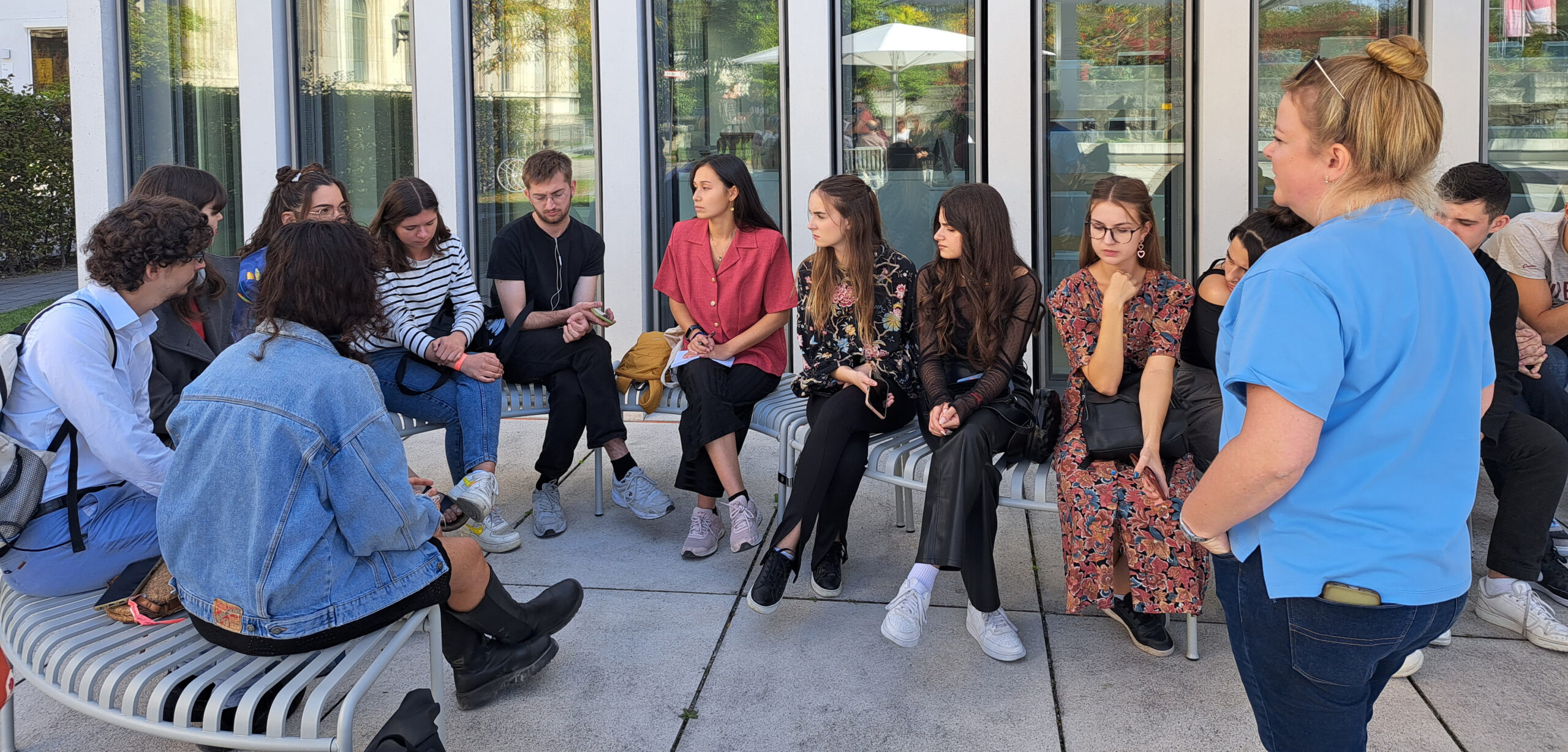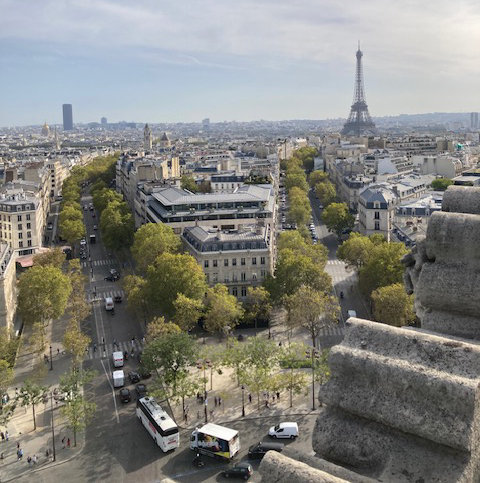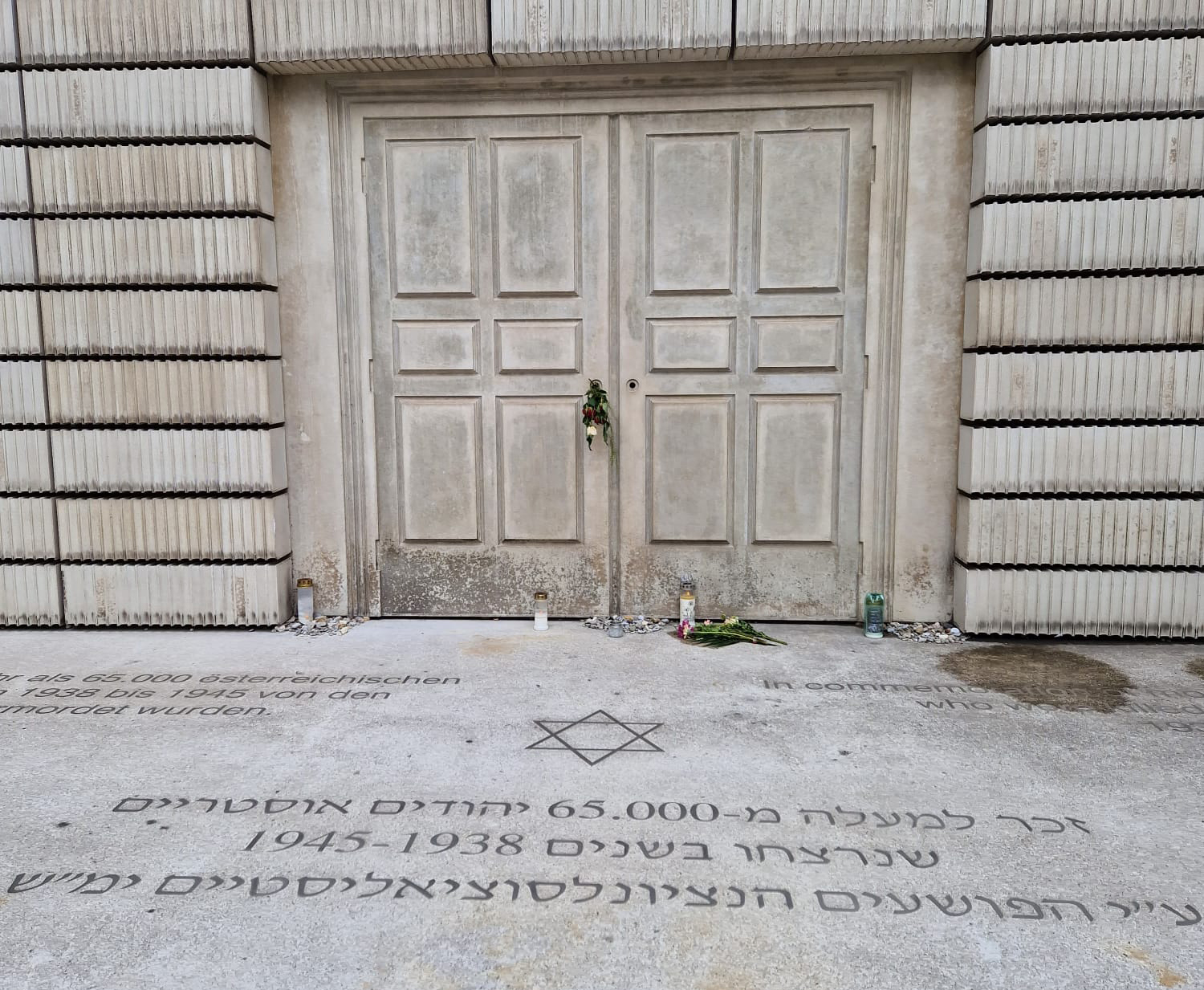Journey Through History: A Unique Travel Experience Exploring Europe’s Past

The context
A key challenge for international youth work is to raise young people’s awareness of social and political coexistence in Europe, while also broadening their understanding of wars on the continent. With this in mind, the EVZ Foundation and the Franco-German Youth Office (FGYO) joined forces to create a pilot project entitled ”War(s) in Europe. Shared experience, collective memory? – Germany, France, Bosnia and Herzegovina”.
This was the first collaboration on a youth exchange between the EVZ Foundation and the FGYO. The former finances and supports projects about remembrance while the latter finances and supports youth exchanges, mostly between France and Germany, but also with other parts of Europe and neighbouring countries. This collaboration channelled the fields of expertise of both organisations in order to face the realities of war in Europe and other parts of the world over the last years, especially the war in Ukraine.
The starting point of the project were the wars of the 20th and 21st centuries and how they still shape the history and identity of people in the three involved countries: the Second World War and the successful reconciliation of France and Germany, the Yugoslav wars and the resulting political conflicts in this region, and the current Russian war of aggression in Ukraine. The aim was to answer this question: How do we deal with these three experiences as a society in Europe? How do they affect the daily lives of young people, and how can we talk about it with them? For this, the FGYO and the EVZ Foundation have created a framework in which specialists in formal and non-formal education from the three participating countries, each already experienced in (international) youth education, have developed methods to broach the topic with young people. These methods were tested during a travelling youth exchange from Paris to Sarajevo, which took place from October 9-19, 2023, with young people aged from 18 to 24 from France, Germany and Bosnia-Herzegovina. This publication is the result of this test and of these experiences.
What makes this approach unique is the travel aspect of the meeting. The project took the participants on a journey from West to East: 10 days, 5 cities in 5 different countries, from Paris to Sarajevo. They discovered history on historical sites, which represent the military conflicts that marked Europe in the 20th century, and spent time studying the stories behind them and how relevant they are for the inhabitants of these regions.
The trip kicked off in France in order to have a closer look on the First World War, its French perspective, and the traces it left on Versailles and Paris. The topic is quite far removed from the young participants’ experience but still present in our landscape today, especially in Paris due to the numerous memorials. The visit of the Arc de Triomphe and Tomb of the Unknown Soldier in the middle of Paris was the focal point of our stay in France. The eternal flame, a symbol of recognition continuously attended to first by veterans, now by other people maintaining the work of remembrance, connected the participants of France with those from Bosnia-Herzegovina, for there is also a flame in Sarajevo to remember the victims (both civilian and military) of the Second World War.


We then moved to Munich, to learn of its specific role in the rise of Nazism in the late 1920s. The visit of the Munich Documentation Center for the History of National Socialism, also a place of remembrance, aims to educate about the rise of the right-wing extremist movement and its supporters between the two wars in Munich. A lesson, which is still very accurate, nowadays, when similar movements are growing in every European country with each new election, proving how vigilant everyone needs to remain in order to avoid the repetition of history.
We moved to the “gateway to the Balkans” with the visit of Vienna and the traces left there by the Second World War. There was an opportunity to talk with locals, to understand the importance and story of the memorials located everywhere in the city through their eyes and obtain their personal point of view about them; whether they were accepted, or rejected, and why.
The closer we came to Sarajevo, the more we entered the present day, confronted with the history of wars now past, but whose effects are still with us today through testimonies and the duty to remember.


On our way to Bosnia-Herzegovina, we stopped at Jasenovac, a powerful place of remembrance for the Balkan region, right at the border between Croatia and Bosnia-Herzegovina. This place, unknown on the French and German sides of historical narratives, shares the horrific history of the events, which took place in the death camps of the Second World War. Added to the Nazi ideology was a fierce local hatred of ethnic and religious minorities, which resulted in terrible systematic massacres. With the visit of this memorial, we moved to an individual level of understanding history, while at the time also feeling remembrance as a group, strengthening the importance of our duty of memory.
Sarajevo was the conclusion of our journey through history and geography, where the wars studied during the trip were connected. It is a good example of a region that is still confronted with the consequences of wars as well as the impact of the Russian war of aggression on Ukraine. We set foot in recent history, where people only 10 years older than the participants are victims of a European war. The “Living Library” workshop, organized in Sarajevo, brought live testimonies of the victims to the participants. They could listen, understand and interact with history through individual stories.

Benefits of slowly travelling together
One of the challenges of this project was the question of travel. Travelling while respecting the environment is always tricky, as with time and resources being limited, flying is often preferable. An environmentally friendlier way of travelling via train and coach means less time for the actual programme, which is a major downside for the most of the structures organizing these projects. In this case, instead of jumping from airport to airport with a limited experience of the countries visited, the slow travel on this project taught another way to move across Europe. “[…]I think traveling with the group was great, really interesting thing to put in a project because usually we are just at one place and that’s it […]”, as one of the project’s participants put it.
It is also a great informal moment, which the group dynamic can benefit from. People help each other with luggage, sit in groups of 2 or 4; they can relax, play games, have some time alone, engage in casual conversation, or watch a movie together. They can sit with people speaking their own language, or mix it up and go speak with a person from a different country. Sometimes they even have a seat next to a person who does not belong to the group and have a great exchange with them, trying out their new vocabulary in one of the group’s languages. It is a time where no one expects anything from anyone and connections just happen organically (or not, and that is fine). As one of the participants confirmed: “[…] it helps the people to bond very quickly”.
In each city, the participants arrived curious about their new environment. They often had time to walk around and get acquainted with the street names and the shops, and were keen on discovering architecture and food with each other. It created a space where they could share their impressions with people living this adventure by their side, who could relate to what they were experiencing themselves. It also helped to get a real sense of how long it actually takes to leave one country for another in Europe, and how rewarding it is to take this extra time. The participants could actually feel the change throughout the journey; the different languages, behaviours, atmosphere, weather, some cultural nuances between the countries we travelled through. It definitely had an impact on how the participants understood and experienced each stop on the itinerary. It was special to them, different from what they knew: “[…] The travelling aspect was awesome, almost a different city or country every day, it was an adventure! […]”.
Travelling through countries where everyone, at some point, could take on the role of guide, translator or Internet data sharer (very important these days) was wonderful. The participants could all help one another during the trip, so they learned to lean on each other. From three distinct linguistic groups at the very beginning of the project, curious and shy about connecting with each other, the trip encouraged them to make contact, to talk to each other, to learn from each other and to trust each other.
Challenges of travelling with a group
As the (slow) travelling part of the youth exchange takes some time, it is important to dedicate a certain amount of time of the programme to the “get to know each other” phase with the participants (two full mornings at least). This moment aims to connect on a personal and linguistic level, and to create a group dynamic where everyone feels safe to be themselves and to express their feelings without feeling embarrassed. This is especially important when, as for our project, the topic is heavily emotionally charged. Linguistic animation, theatre exercises, cooperative games and everything along those lines brings people closer together and eases the whole process. It is a great bonus if you implement these moments every day throughout your trip; if you do, you will observe a shift in the group. The original linguistic groups will dissolve into groups composed according to personal affinities… and isn’t this the whole point?
It is important to plan feedback moments, where the participants can share their views and reflect on the past day. Sometimes due to the frequent trips, either to reach certain sites while based in a city or to change countries, it feels optional to have these moments; but creating a routine where the participants have time to express themselves will be beneficial on the long run, both on a learning level and for the dynamic of the group.
Travel time is an uncertain time zone in a project. It seems like an “empty time” and a perfect occasion to do things it was not possible to do during the programme on site (discuss a specific topic, research, create content, etc.), but… it is not empty, quite the contrary. As mentioned above, it is the perfect time for the participants to bond, recharge and process the experiences of the last days. In terms of group dynamic, it is a good thing that travel provides this time and place to keep the participants healthy and in a good and rested mood.
Five countries in ten days, with a full programme – it is needless to say that the team has to be very well prepared, both before the trip when booking and arranging visits, and during the trip, with a defined distribution of the roles among team members. Clear communication and distinct missions are necessary. This helps the participants to identify the right contact person to approach and calms the process both for the team and the participants, at a time when there is a lot to be aware of.
Conclusion
This exceptional project created friendships inspired both the participants and the team, offered a rare opportunity to travel through space and time, educated young people about the multiplicity of historical narratives, and enhanced their understanding of the importance of tolerance, discussion and peace.
Author: Morgane Quatremarre Bonnel